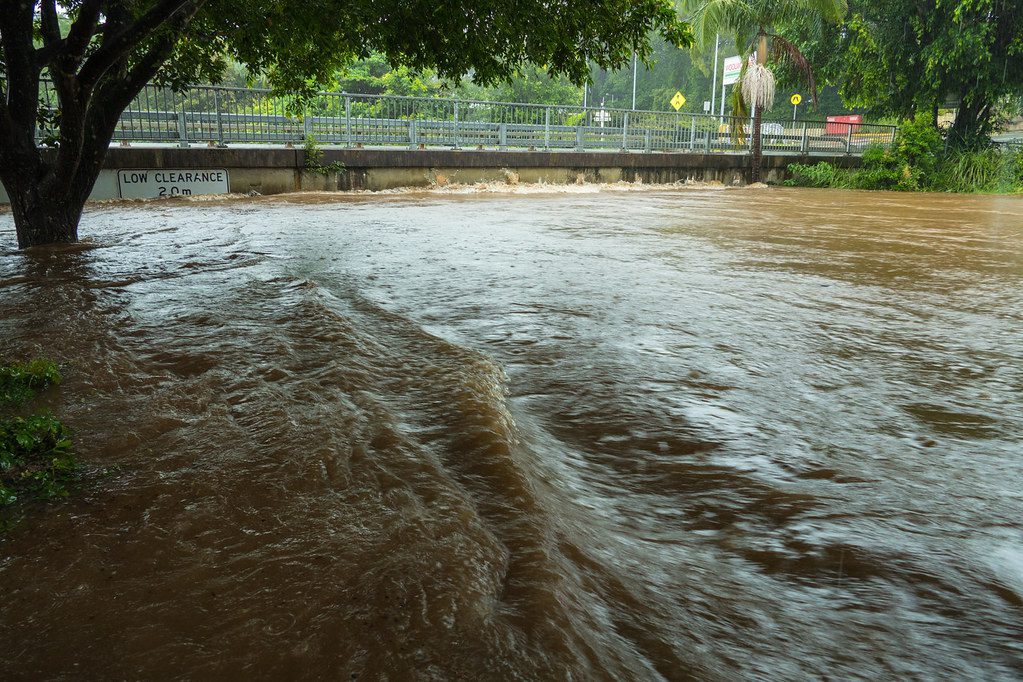Weather is always a topic of conversation in Maleny but never more so than last week. An extreme wet weather event saw 700 mm of rain fall in Maleny from Wednesday 23rd to Sunday 27th February 2022. Homes, businesses and farms were inundated, roads were cut by flood waters, creeks and dams overflowed, branches, mud and rocks tumbled over local roads and huge slips appeared. The Obi lapped threateningly at the bridge in town. In January 1974, Maleny registered 1534.4mm rain, or 60 and a half inches. Maleny’s highest monthly rainfall was in the Great Flood of February 1893 with 2733mm, or over 109 inches.
Our Maleny weather records go back to 1885 partly due to the foresight of Clement Wragge. Wragge was Queensland’s first government meteorologist and had the foresight to set up a rain recording station at Maleny; we now have over 120 years of accurate records. Born in England in 1852, the son of a solicitor, he trained in law. But Bragge’s love of natural science proved too much and he ran away to sea where he learned navigation, astronomy and meteorology. He arrived in Australia to take up his appointment as Government Meteorologist of Queensland on 1st January 1887. In an incredibly short space of time he had established 400 rain recording stations, including Maleny, and 100 synoptic weather stations, including Crohamhurst Observatory, near Peachester. It was here under the guidance of his pupil and assistant, Inigo Jones, the observatory was to become a world famous centre for long range forecasting using a European technique of 30 year cycles that Wragge had learned about at one of the International Meteorological Conferences he had attended in Munich and Paris – and later improved upon by Inigo Jones. Wragge had been so impressed with Inigo’s ability as a schoolboy that he recruited him as his assistant in 1888. Another first for Wragge was naming of tropical cyclones, using the Greek alphabet, progressing through Greek and Roman mythology and finally to names of politicians of the day, on the grounds that both were ‘national disasters’. The system of naming of cyclones lapsed for many years but was resumed by the BOM in 1963.
Inigo Jones became a full-time forecaster and lecturer in 1927 and founded the privately operated Crohamhurst Observatory in south-east Queensland. Jones died at home on his farm at Crohamhurst, Queensland. His assistant Lennox Walker expanded Jones’ theories and continued marketing long range forecasts until 2000, when he passed the business over to his own son Hayden Walker. Crohamhurst Observatory was listed on the Queensland Heritage Register in 2008.
(Extracts about Clement Wragge thanks to Alan Still’s Maleny Weather History page at: http://www.malenywx.com/weatherhistory/

